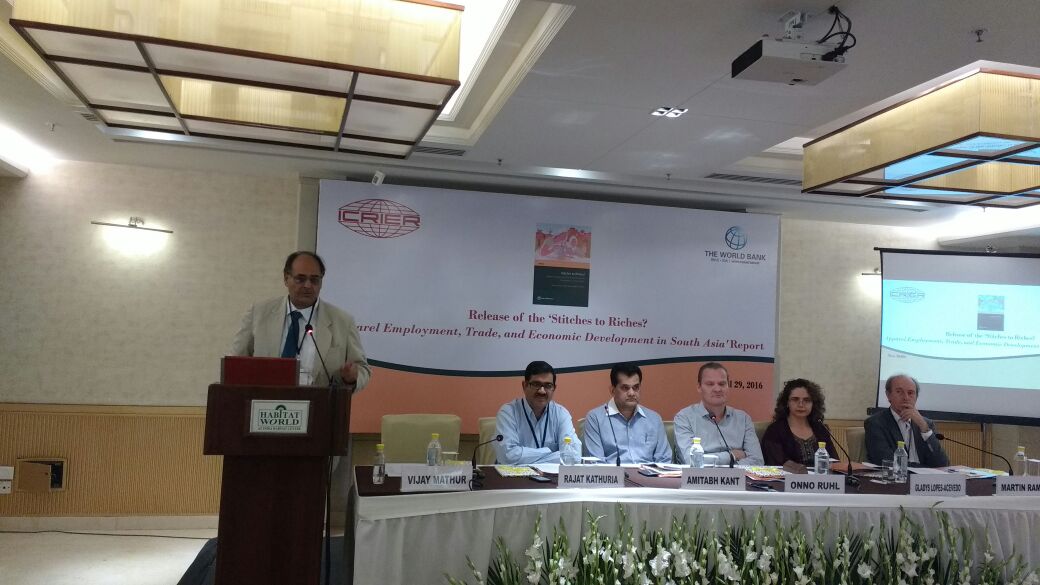“Our packaging and labeling requirements are much more ![IMG-20160429-WA0005[1]](https://www.itvoice.in/wp-content/uploads/2016/04/IMG-20160429-WA00051-300x169.jpg) stringent than EU. The policy of Maximum Retail Price (MRP), sizing etc. should be revisited to achieve parity at the International apparel market.” Speaking at the Stitches to Riches report unveiling Mr. Vijay Mathur, Additional Secretary General, and Apparel Export Promotion Council (AEPC) highlighted the reason for India’s slow growth rate which could have been much higher had India tried to adopt international practices. India-EU FTA which may be signed soon will give India a level playing with Bangladesh.
stringent than EU. The policy of Maximum Retail Price (MRP), sizing etc. should be revisited to achieve parity at the International apparel market.” Speaking at the Stitches to Riches report unveiling Mr. Vijay Mathur, Additional Secretary General, and Apparel Export Promotion Council (AEPC) highlighted the reason for India’s slow growth rate which could have been much higher had India tried to adopt international practices. India-EU FTA which may be signed soon will give India a level playing with Bangladesh.
Apparel Export Promotion Council (AEPC) said, “We need to dispel the negative perception of India in the mind of foreign investors that Indian trade scenario is sluggish. We have been advocating an increase in the overtime working hours from 50 hrs a quarter to 50hrs a month to increase the overall production”. Mr Mathur stressed that the current Research and Development policy does not recognize the R&D activities prevalent in our industry and need to broaden its scope and definition. It needs to consider the experiments in color and fiber under taken by the industry for sample generation, as it is an important step towards business generation.
The other dignitaries present at the event were Mr. Amitabh Kant, CEO, Niti Ayog who graced the occasion along with Ms. Chandrima Chatterjee, Advisor, AEPC, Dr. Rajat Kathuria, Director and Chief Executive, Indian Council for Research on International Economic Relations (ICRIER) and Mr. Onno Ruhl, India Country Director, South Asia, World Bank.
The World Bank ‘Stitches to Riches’ report unveiling held at India Habitat Center provided an insight into the Apparel employment, trade, and economic development in South Asia. The effects of rising wages in China’s apparel sector in the recent years is leading to a potential 10 per cent rise in apparel prices in China, it could help India create at least 1.2 million new jobs in its labor-intensive garment industry. If India wants to encash from the gradual shifting of China from the sector, it needs to make the rules concerning import of man-made fibers flexible, facilitate market access and encourage foreign investments to reach more end-markets.





